Cheetahs are the fastest land animal in the world, capable of running up to 70 miles per hour (110 kph). Despite their incredible speed and agility, cheetahs still face numerous threats from predators in their natural environment.
These predators have evolved unique hunting strategies that allow them to effectively hunt down these swift creatures. One of the main predators of cheetahs is lions. Lions are apex predators and can easily overpower a single cheetah using their strength and size advantage. Additionally, lions often hunt together in groups known as prides, allowing them to take down prey much larger than themselves.
While cheetahs may be faster runners than lions, they lack the same level of physical power needed to defend themselves against an attack by these large cats. Other common predators of cheetahs include hyenas, leopards, African wild dogs, and even some bird species such as eagles and vultures who target young or injured individuals.
Understanding the various predators faced by cheetahs is crucial for conservation efforts aimed at protecting this threatened species from extinction.
How Do Cheetahs Defend Themselves?
Cheetahs, known for their incredible speed and agility, have evolved a few mechanisms to defend themselves when faced with potential threats or dangers in their environment. While they are primarily built for speed and hunting, their defense strategies include:
- Retreat and evasion: Cheetahs are cautious animals and tend to avoid confrontations whenever possible. If they perceive a threat, their first instinct is to flee. They rely on their exceptional running abilities to escape from predators or other potential dangers. Cheetahs can reach speeds of up to 60 to 70 miles per hour (97 to 113 kilometers per hour) in short bursts, allowing them to outrun most predators.
- Vocalizations and bluffing: Cheetahs possess a range of vocalizations that they use to communicate and assert dominance. When feeling threatened, they may hiss, growl, or emit a high-pitched chirping sound. These vocalizations, coupled with aggressive postures like baring their teeth, arching their back, and raising their fur, can serve as warning signs to intimidate potential threats. Sometimes, these displays are enough to deter predators or intruders.
- Camouflage and stealth: Cheetahs have a unique spotted coat pattern that helps them blend into their surroundings, providing some level of camouflage. They utilize this natural camouflage along with their ability to hide in tall grass or rocky terrain to remain undetected by predators or potential threats. By relying on their stealth and remaining hidden, they increase their chances of avoiding confrontations altogether.
It’s important to note that while cheetahs possess some defensive mechanisms, they are not as well-equipped for combat as some other large predators. Their slender build, lightweight frame, and non-retractable claws make them less adept at engaging in direct confrontations or physical combat. Therefore, they rely primarily on their speed, agility, and evasive tactics to protect themselves in the wild.
The Swift Sensory Abilities of Cheetahs: How Good Are Their Senses?
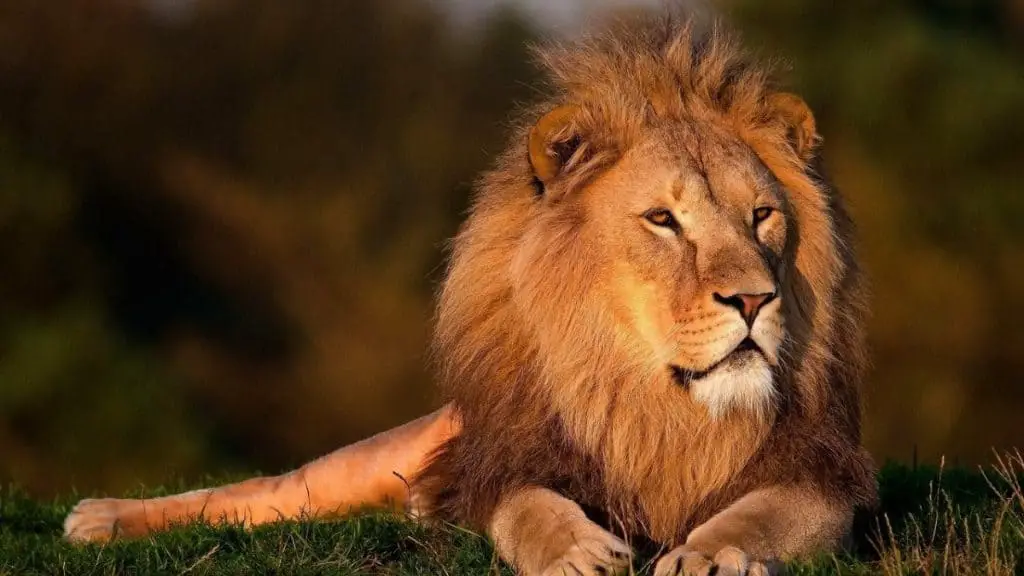
Lions
Lions are the apex predators of the savanna, and their impact on other carnivores cannot be overstated.
Cheetahs, in particular, have been shown to suffer greatly due to lion predation. In areas where lion populations are high, cheetah survival rates tend to be lower as lions often steal prey that cheetahs have hunted or killed themselves.
Despite this threat from lions, cheetahs have developed several ways to avoid being eaten. One such tactic is speed; cheetahs can run at incredible speeds of up to 70 mph, making them difficult for lions to catch. Additionally, they often hunt during daylight hours when lions are less active. Finally, cheetahs will sometimes climb trees to escape danger – something that lions are unable to do due to their weight and size.
These strategies allow some cheetahs to coexist with lions in certain regions despite the risk posed by these larger predators.
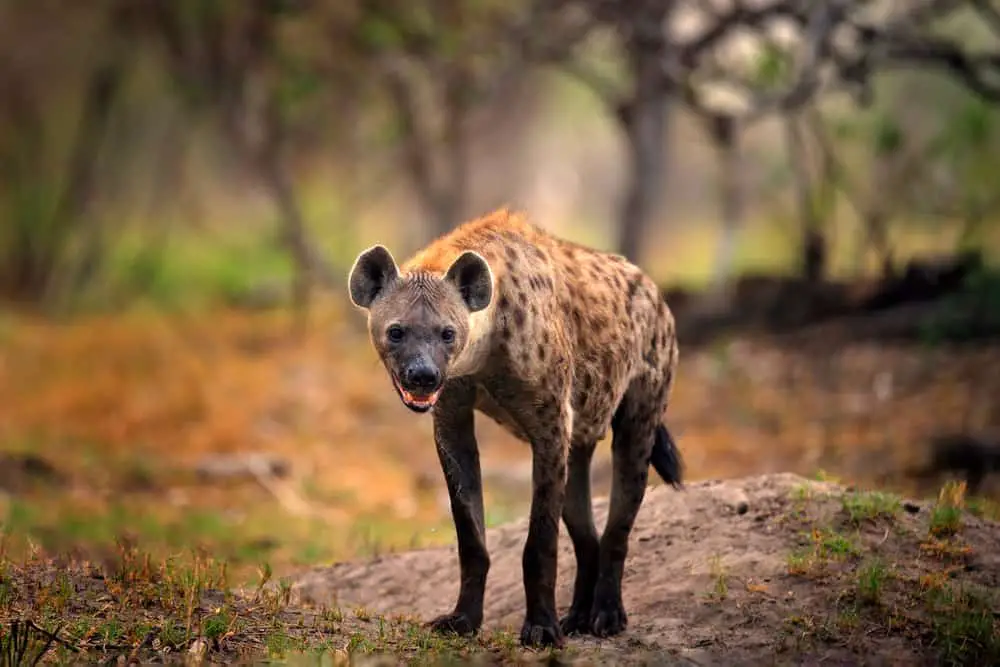
Hyenas
Hyenas are known for their cunning behavior and opportunistic nature. They are highly adaptable predators that can hunt alone or in groups, depending on the situation. Hyenas have a unique social structure where females dominate over males, making them one of the few mammalian societies led by females. These animals also have powerful jaws that allow them to crush bones and consume all parts of their prey, including hooves and horns.
Cheetahs often fall victim to hyena attacks since they are solitary hunters without much protection against larger predators. When cheetahs bring down prey, hyenas will often attempt to steal it from them through intimidation tactics, such as loud vocalizations and aggressive posturing. In some cases, hyenas may even kill young cheetah cubs if given the opportunity.
However, despite these interactions between the two species being mostly negative, there have been instances where cheetahs and hyenas cooperate when hunting large prey like wildebeest. Unique cooperative behaviors observed between cheetahs and hyenas include conditions necessary for successful collaboration. The potential impact of climate change on cheetah populations and their habitat is also a significant factor to consider.
Factors contributing to high mortality rates among cheetah cubs include cheetah’s hunting strategies and why they lack adequate protection. The benefits of having a female-dominated society and how their jaw strength aids in breaking bone are also key points to consider. Lastly, the reasons behind hyena scavenging habits are important to understand.
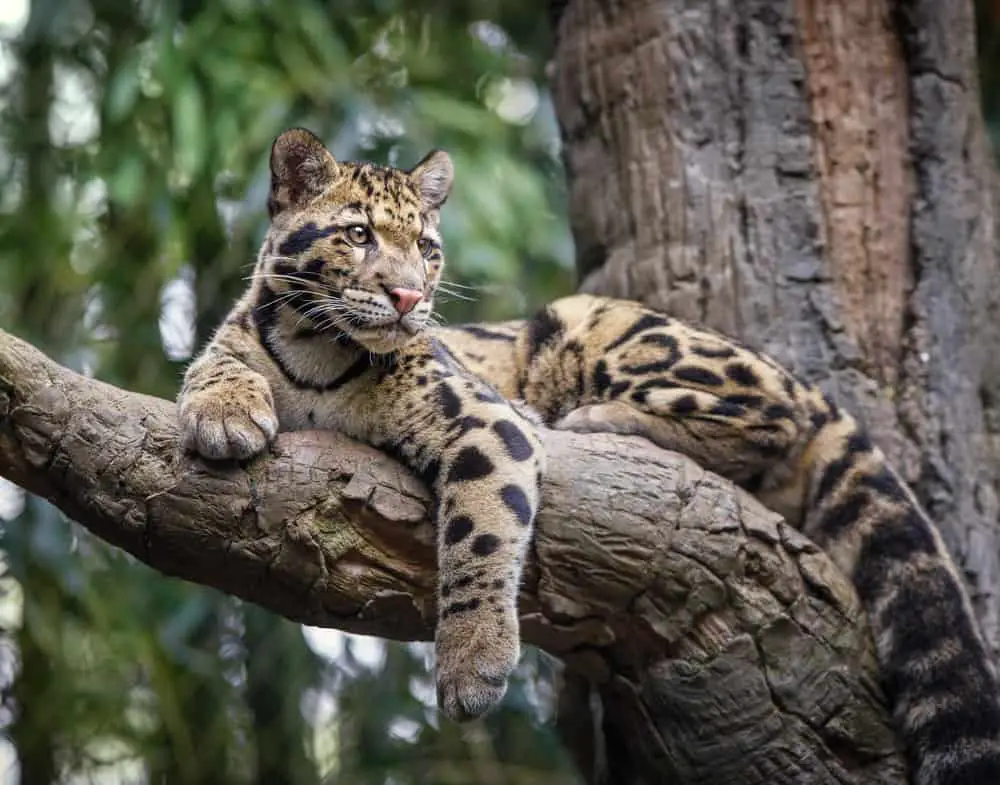
Leopards
Hyenas may be cunning opportunists, but they are not the only predators that cheetahs have to contend with. Leopards, also known as stealthy hunters of the night, can pose a significant threat to these big cats. Like hyenas, leopards share habitat overlap with cheetahs and compete for prey.
Leopards are powerful climbers and ambush hunters capable of taking down animals larger than themselves. They tend to hunt at night and rest during the day, which allows them to avoid direct competition with other carnivores like lions and hyenas who are active during the day. However, this does not mean that they do not come into conflict with other predators. In areas where leopards and cheetahs share habitat, there is likely to be some level of competition for prey between these two species. Cheetahs rely on their speed to catch fast-moving prey such as gazelles, whereas leopards use their strength and agility to take down larger animals such as impalas or even young giraffes.
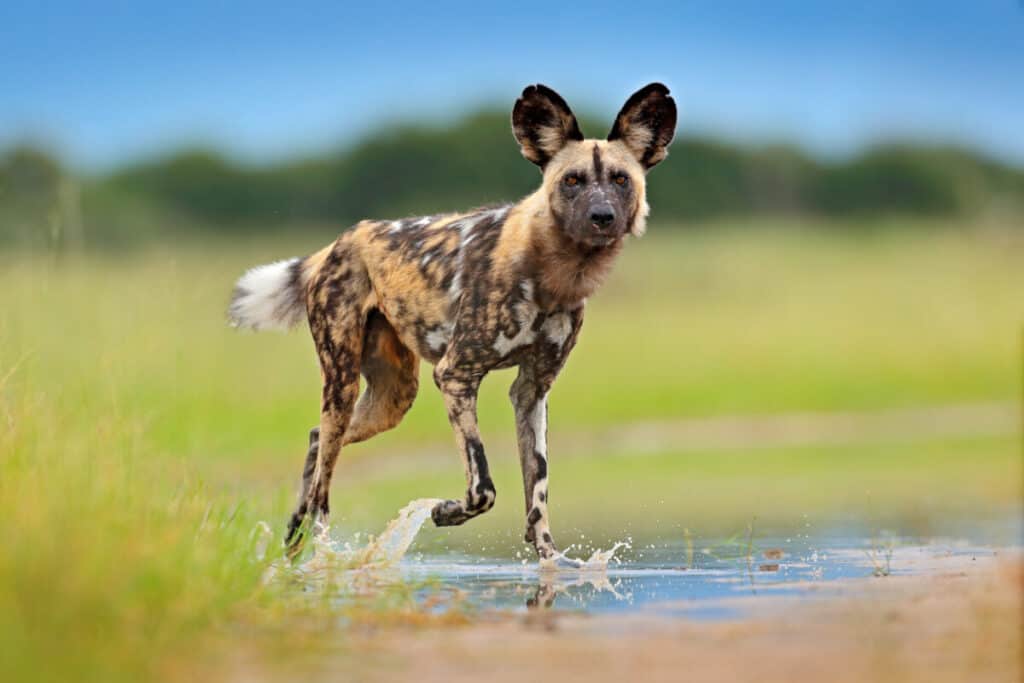
African Wild Dogs
While cheetahs are known for their speed, African wild dogs have gained notoriety for their precision in hunting. These canids are highly social and form packs that work together to take down prey. Their coordinated efforts allow them to be successful hunters despite the fact that they lack some of the physical advantages possessed by other predators.
Hunting strategies employed by African wild dogs include flanking, running down prey until it is exhausted, and using high-pitched vocalizations to communicate with each other during a chase. They also prefer certain types of prey such as antelopes, gazelles, and impalas. However, they do not discriminate against smaller animals like rodents or birds if those are what is available.
The pack mentality allows them to bring down larger animals than they would be able to on their own, making them formidable foes for any potential prey species.
The success rate of these hunts varies depending on factors such as the size of the pack and availability of food sources. Despite this variability though, African wild dogs continue to thrive throughout sub-Saharan Africa due largely in part to their cooperative nature when it comes to taking care of themselves and securing meals for survival.
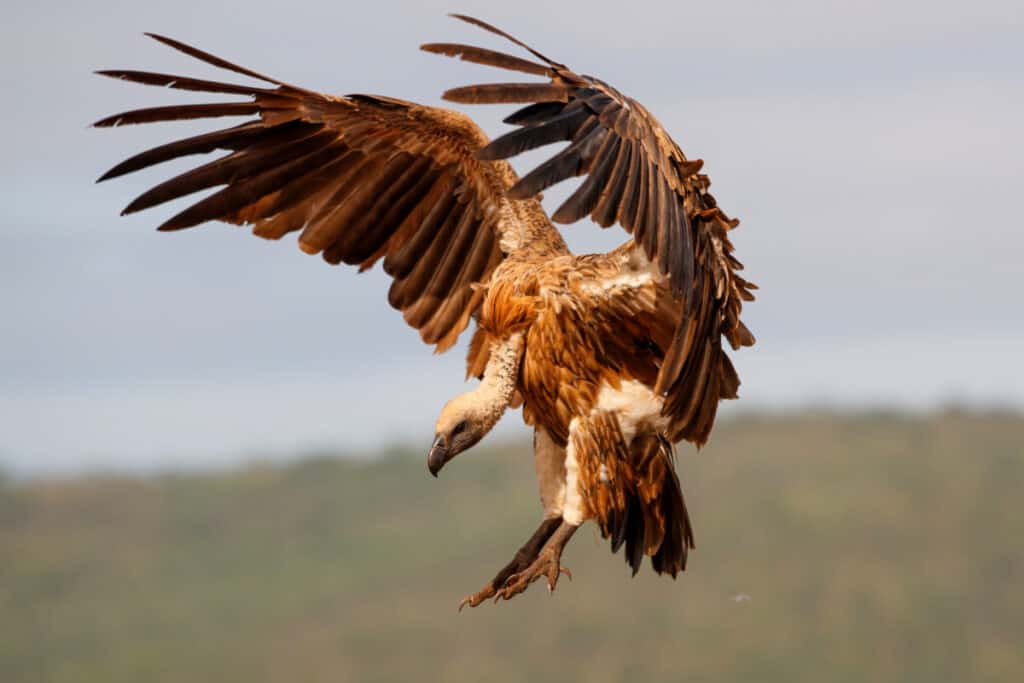
Eagles And Vultures
Birds of prey can swoop down from the sky and attack cheetah cubs or even adult cheetahs.
This vulnerability has implications for the hunting behavior of cheetahs. They often choose open areas with good visibility when hunting so that they can see any potential threats coming from above. Additionally, they tend to scan the skies frequently while on the move or while resting. Cheetah mothers also try to hide their cubs in dense vegetation or rocky outcrops to avoid detection by airborne predators. Despite these adaptations, some research shows that up to 40% of all cheetah cub mortalities may be attributed to predation by birds of prey.
To adapt and avoid predation from eagles and vultures, cheetahs have developed several strategies over time. For example, they may use trees or other high elevations as lookout points so that they can spot incoming attacks early enough to take evasive action. Some individuals may also run zig-zag patterns rather than moving in straight lines during chases since this makes them harder targets for flying predators. Overall, although aerial predators pose a significant threat to cheetah populations, these big cats have evolved various behavioral and physical defenses against them.
Human Threats To Cheetah Populations
The cheetah, with its remarkable speed and agility, is one of the most iconic big cats in the world. Unfortunately, it faces numerous threats that have resulted in a significant decline in its population over the years.
One major threat comes from human-wildlife conflict due to habitat loss. As human populations continue to grow, more land is converted for agriculture or urbanization, leading to fragmentation and degradation of natural habitats that are essential for cheetah survival.
Cheetahs rely on open grasslands as they need vast expanses of territory to hunt prey effectively. Habitat loss has not only reduced their hunting ground but also increased their vulnerability to other predators such as lions and hyenas who compete with them for resources.
Moreover, humans often view cheetahs as a threat to livestock and may retaliate by killing them directly or setting traps. This type of conflict further exacerbates an already precarious situation for these magnificent animals.
Conservation Efforts To Protect Cheetahs From Predation
Methods employed to conserve cheetahs from predation include habitat conservation, anti-poaching efforts, and human-wildlife conflict management. These methods aim to minimize the impact of natural predators such as lions, hyenas, leopards, and wild dogs on cheetah populations.
Habitat protection involves preserving large areas of land for cheetahs to roam freely without encountering humans or other predators. This method is challenging due to the rapid loss of suitable habitats caused by human activities such as agriculture and urbanization.
Anti-poaching efforts involve reducing illegal hunting activities that target cheetahs for their skin, bones, and meat. Poachers also set traps which end up killing several individuals in a short period.
Human-wildlife conflict management aims at minimizing encounters between humans and cheetahs through measures such as relocating problem animals away from populated areas and building physical barriers like electric fences around settlements. Despite these efforts being vital in conserving the species, they face various challenges including lack of funding, inadequate personnel, inadequate technology tools required for effective monitoring among others.
Efforts aimed at protecting cheetahs from predation have had some success in recent years. However, there is still much work needed to ensure sustainable populations of this endangered species in the future. It is imperative that stakeholders continue investing resources towards research into more efficient conservation strategies while educating communities about the importance of coexisting with wildlife to mitigate attacks on livestock hence reducing retaliatory killings by farmers.
Conclusion
Cheetahs are one of the most endangered big cats in Africa, and their survival is threatened by a range of predators.
Lions are the apex predators on the savanna and pose a significant threat to cheetah cubs and adults alike. Hyenas also prey on cheetahs, often stealing their kills or attacking them when they are vulnerable.
Leopards are stealthy hunters that prefer to hunt at night, making them formidable opponents for cheetahs. African wild dogs work together as pack hunters with deadly precision, overpowering even adult cheetahs if they catch them off guard. Eagles and vultures are aerial predators that can attack young or injured cheetahs.
In addition to natural predators, human threats such as poaching and habitat loss have significantly impacted cheetah populations. Conservation efforts focused on protecting habitats and reducing human-wildlife conflict may help safeguard this iconic species from extinction.
Overall, understanding the complex interactions between cheetahs and their predators is crucial for developing effective conservation strategies aimed at preserving these magnificent animals for future generations. By addressing both natural threats and human impacts on these top predators, we can ensure that they continue to roam free across the African savannas for many years to come.
